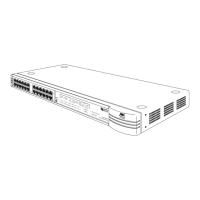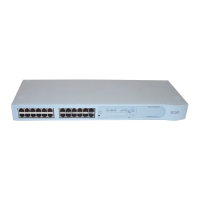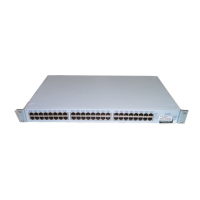170 C
HAPTER
6: V
IRTUAL
LAN
S
(VLAN
S
)
Connecting VLANs to
Other VLANs
If the devices placed in a VLAN need to talk to devices in a different
VLAN, each VLAN requires a connection to a routing or Layer 3 switching
device. Communication between VLANs can only take place if they are all
connected to a routing or Layer 3 switching device.
Connecting to VLANs
on Legacy Switch
Units
Your Switch supports VLANs using the IEEE 802.1Q VLAN standard,
however legacy Switch units (for example, the SuperStack II Switch 1000)
do not use this system. If you want to connect the VLANs on your Switch
to the VLANs on legacy Switch units, note the following:
■
You must define all the VLANs used by the legacy Switch units on your
Switch; it only forwards traffic for legacy VLANs that are defined.
When defining the VLANs, the Local ID on your Switch corresponds to
the VLAN ID on the legacy Switch units.
■
If your legacy Switch units use multiple VLANs, all connections
between your Switch and the legacy Switch units must use VLT
tagging. If your legacy Switch units use a single VLAN, the
connections between your Switch and the legacy Switch units can be
untagged.
■
All ports on your Switch that are connected to legacy Switch units
must have 802.1Q learning disabled.
■
Do not define VLAN 15 on your Switch if the legacy Switch units use
AutoSelect VLAN Mode.
■
Do not define VLAN 16 on your Switch if the legacy Switch units use
the Spanning Tree Protocol.
For examples of connecting VLANs on your Switch to VLANs on legacy
Switch units, see “Connecting to a Legacy Network”
on page 178.

